On and off the virtual racetrack, this has been a year I’ll remember both for good and bad reasons. In the spirit of holiday samplers that would even make Whitman’s chocolates jealous, one recent weekend was packed with a full year’s worth of those memories and emotions, making it a fitting end to 2018.
My year started on the sidelines, unable to participate in the NEO Endurance Series race at the Nurburgring due to an early crash for our team, at Spa due to Internet issues, or in the iRacing 24 Hours of Daytona because of widespread server problems.
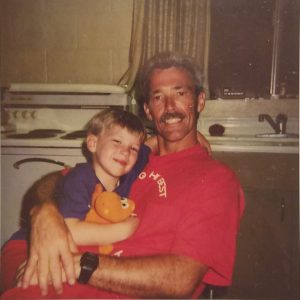
My dad and I when I was a kid.
But those disappointments paled in comparison to what happened in early March — an event that nearly sent my life off-track. Less than two weeks after I’d last seen him and talked to him, my dad passed away, unexpectedly done in by the liver disease — or some offshoot of it — that had progressively been depleting his once-sharp mind and body.
It was a crushing blow for me and my entire family, who had all held out hope that if he could make it another year or so, he could get on a transplant list and be as good as new.
But it wasn’t meant to be that way, and accepting that news once he became terminally ill was the toughest part.
I worried that I would remember him as he was in sickness, but not in health. The best way, I determined, to keep those good old memories alive and in the forefront of my mind was to do the things and practice the advice he’d shared with me.
One of those activities was sim racing. So I raced on.
Year in Review
That began with a return to the cockpit in the NEO season-ending 24 Hours of Le Mans. It wasn’t a completely drama-free race for me, but I helped our team secure a ninth-place finish and barely end up in the top 12 in points, which earned us an automatic invitation to the next season.
Before that season began, a new opportunity emerged off the race track. After giving a somewhat critical review of NEO’s web and social media content — or lack thereof — in the post-season survey, I felt guilty and offered my services as a writer. Series director Niel Hekkens accepted, and I became NEO’s web correspondent.
While taking on that role over the summer, I continued writing on The Driver Diary for my second annual Summer Road Trip. This year’s 12 weeks of racing offered a chance to try some new things, such as the IndyCar and HPD prototype, and find redemption at some combinations that in the past had left me wanting more, including the V8 Supercar at Imola and the Lotus 79 at Suzuka.
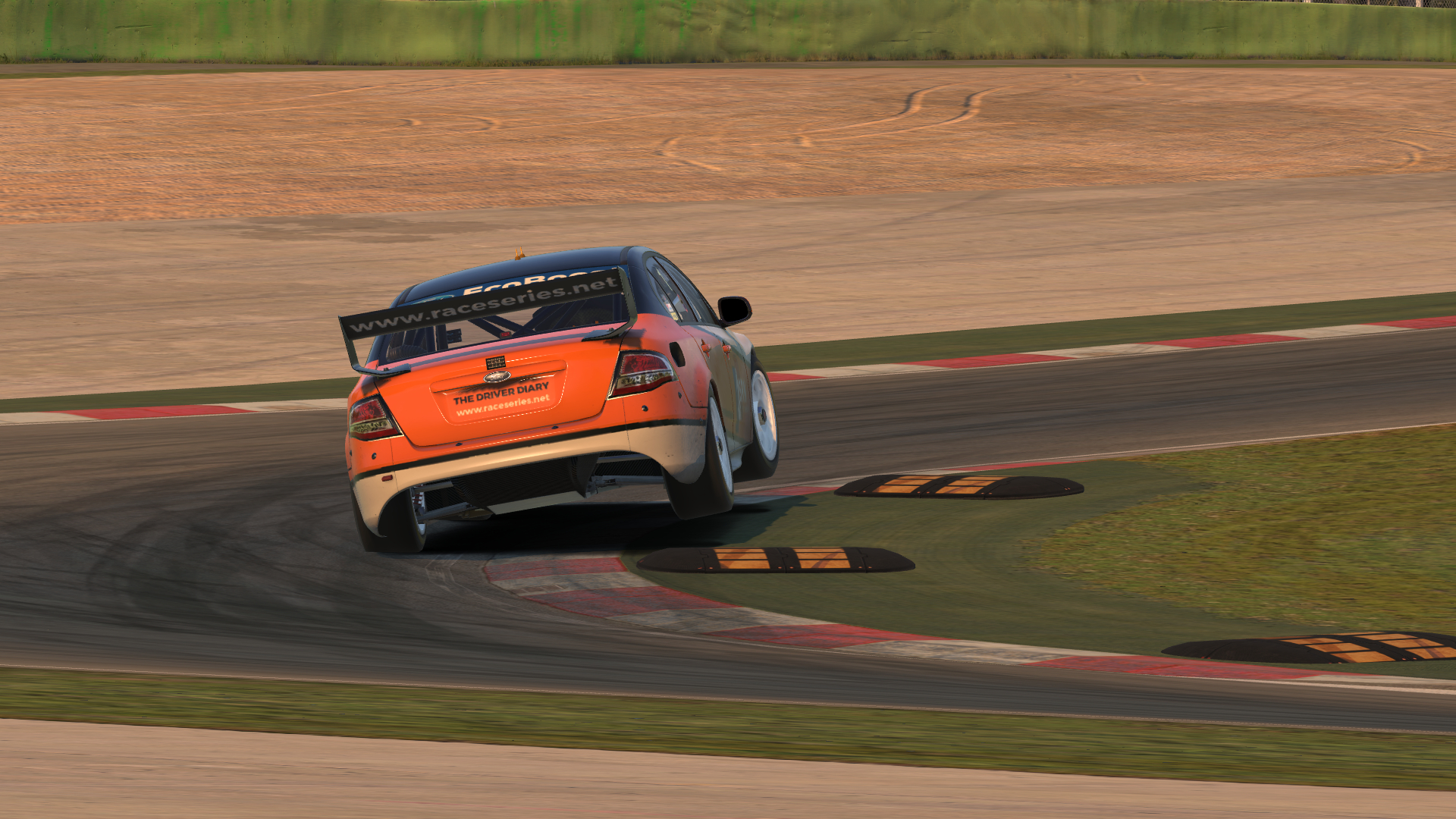
Tackling Imola in the V8 Supercar.
Since then, my coverage on The Driver Diary has slipped a bit — okay, a lot — but it doesn’t mean I haven’t stayed busy in the sim racing world. The beginning of NEO season five has consumed my time, between writing weekly articles for the series and preparing for our team’s races.
My effort started with a solid run at Sebring that ended in a points-paying finish after our car was nearly last at one point in the first hour. I sat out the second race at COTA due to my own busy schedule and lack of preparation time, and an early crash ultimately doomed us to a low finish anyway.
The schedule then took us to Interlagos in mid-December, but it wasn’t the only race on my mind that weekend. I hope I could be forgiven if my NEO practice time was limited, because I wanted to do some driving in a car and at a track that made me think of my dear old dad.
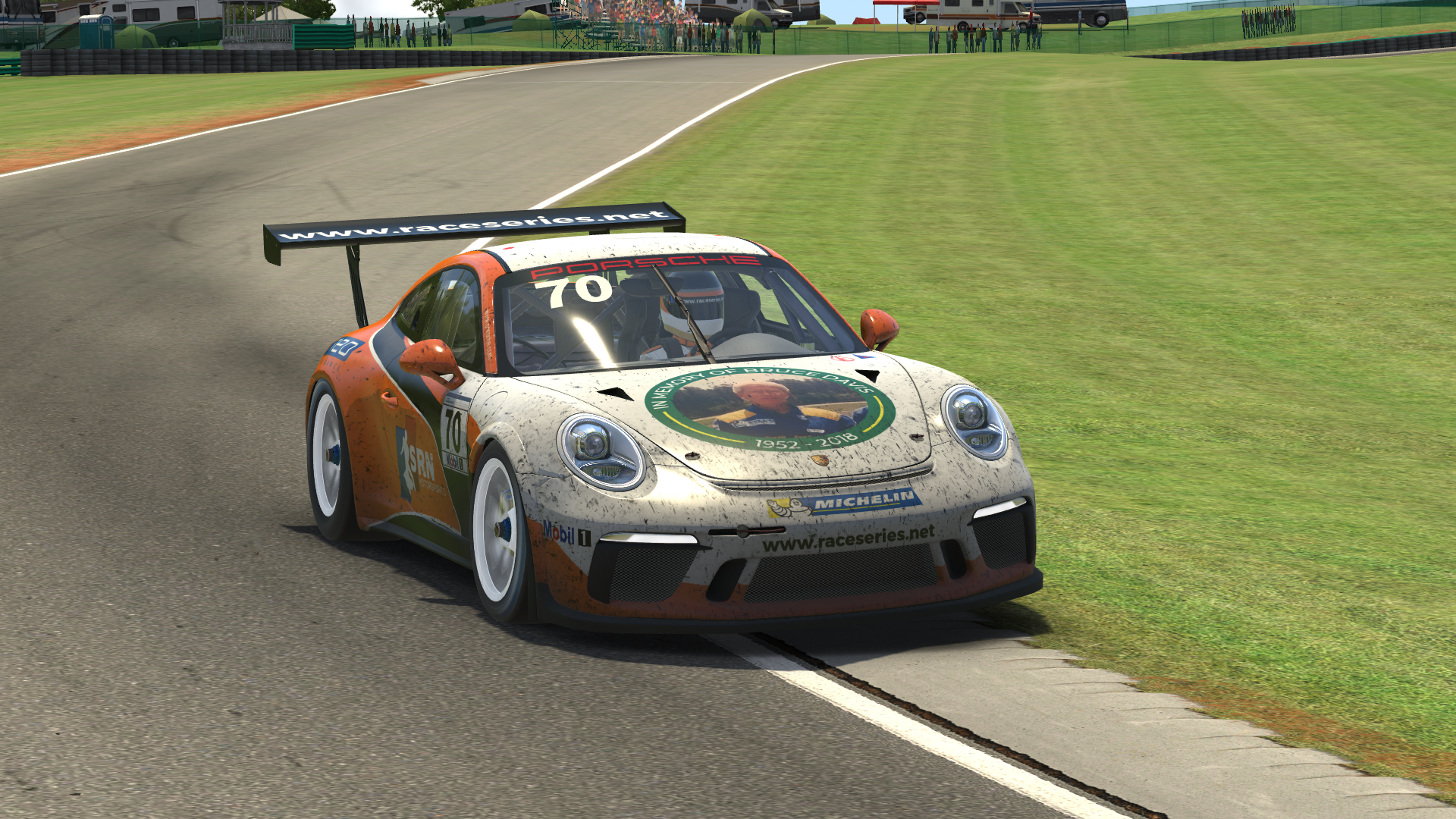
My tribute paint scheme to my dad for the Targa Virginia.
Return to the Raceway
During its first five runnings in the era before team endurance racing was a feature on iRacing, the Targa Virginia established itself as the most difficult solo endurance race around.
With more than three hours of driving around the Virginia International Raceway’s tricky Grand West circuit in a multiclass setting, it required sustained concentration, patience, and skill to even finish, let alone finish well.
I participated in the first running of the event in 2011, and I experienced those challenges first-hand. In the last half of the race, a brief lapse in focus caused me to drive off-track and nearly into the wall. However, I recovered and managed to gain two positions, including one in a close battle for third place.
In part, I believe that race helped me overcome my fear of VIR, which is often an intimidating track for new drivers. If I’m honest, the times I went there in real-life with my dad — first for the Bertil Roos Racing School, then for an IMSA weekend, and later for holiday laps in my own car — were even more helpful.
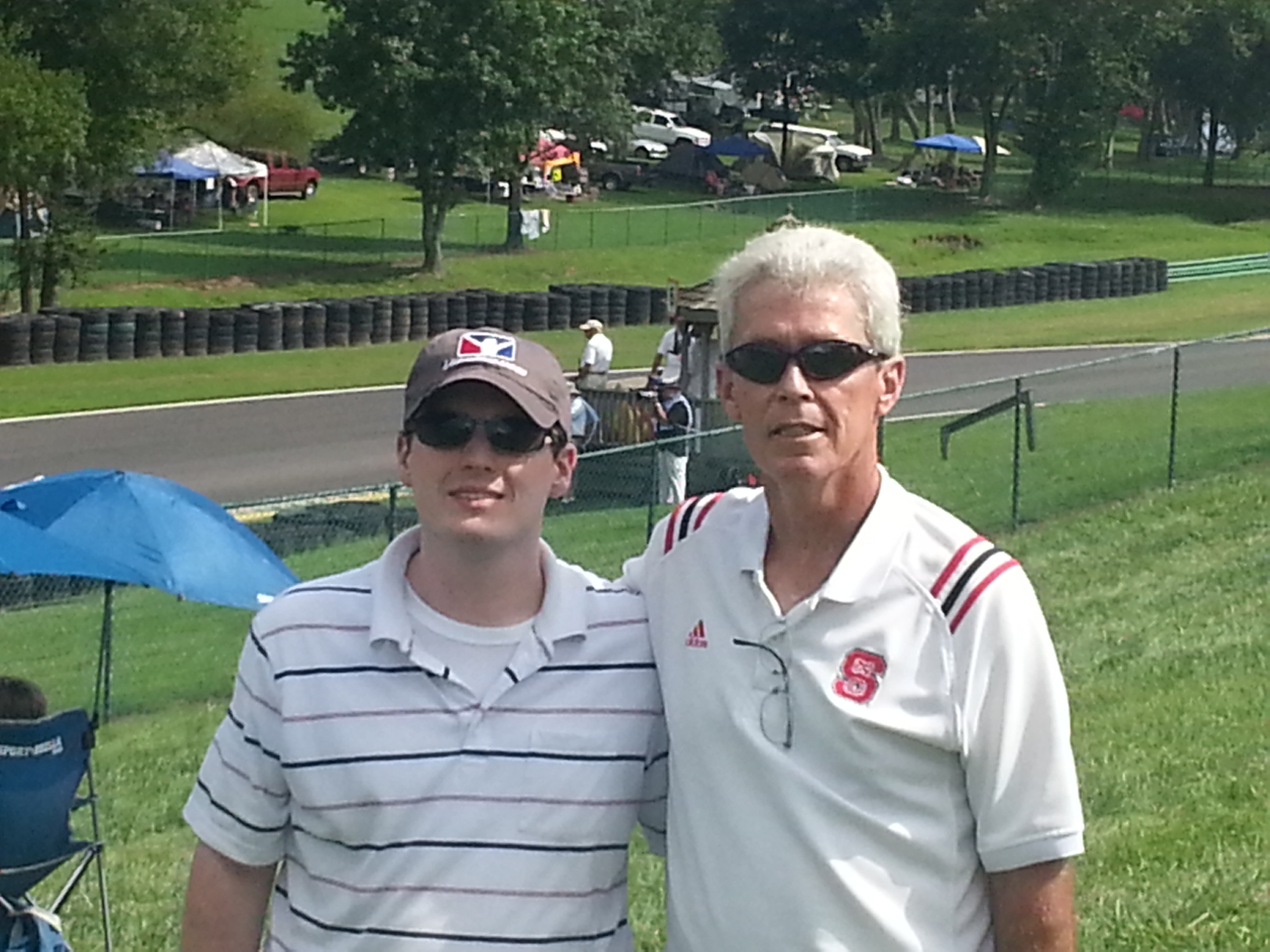
My dad and I at VIR.
With so much time spent at the track with him, I can’t drive a lap around VIR without conjuring up some memory of my dad. There’s the Snake section, where we watched qualifying and races as spectators. Then comes the backstretch, where our cars sat sizzling in the pits on a hot summer day. Entering the Roller Coaster corner, my own car got light after braking perhaps a bit too late. It was a scary feeling, but we just looked at each other and exchanged grins and “whoa”s.
Nearly every corner has some experience associated with it, and running in this year’s Targa Virginia would give me a chance to celebrate some of my favorite memories with my dad, and also remember some of his best advice.
It was also only fitting that I would run the race in the Porsche 911 GT3 Cup car. It’s not only my favorite car on iRacing, but it was also my dad’s favorite car make in real life, having owned a couple of Porsches over the years.
Maybe that was my first lesson for this race. My dad wasn’t exactly rich, but he worked hard and was disciplined his whole life so that he could have some nice things. His cars were at the top of that list.
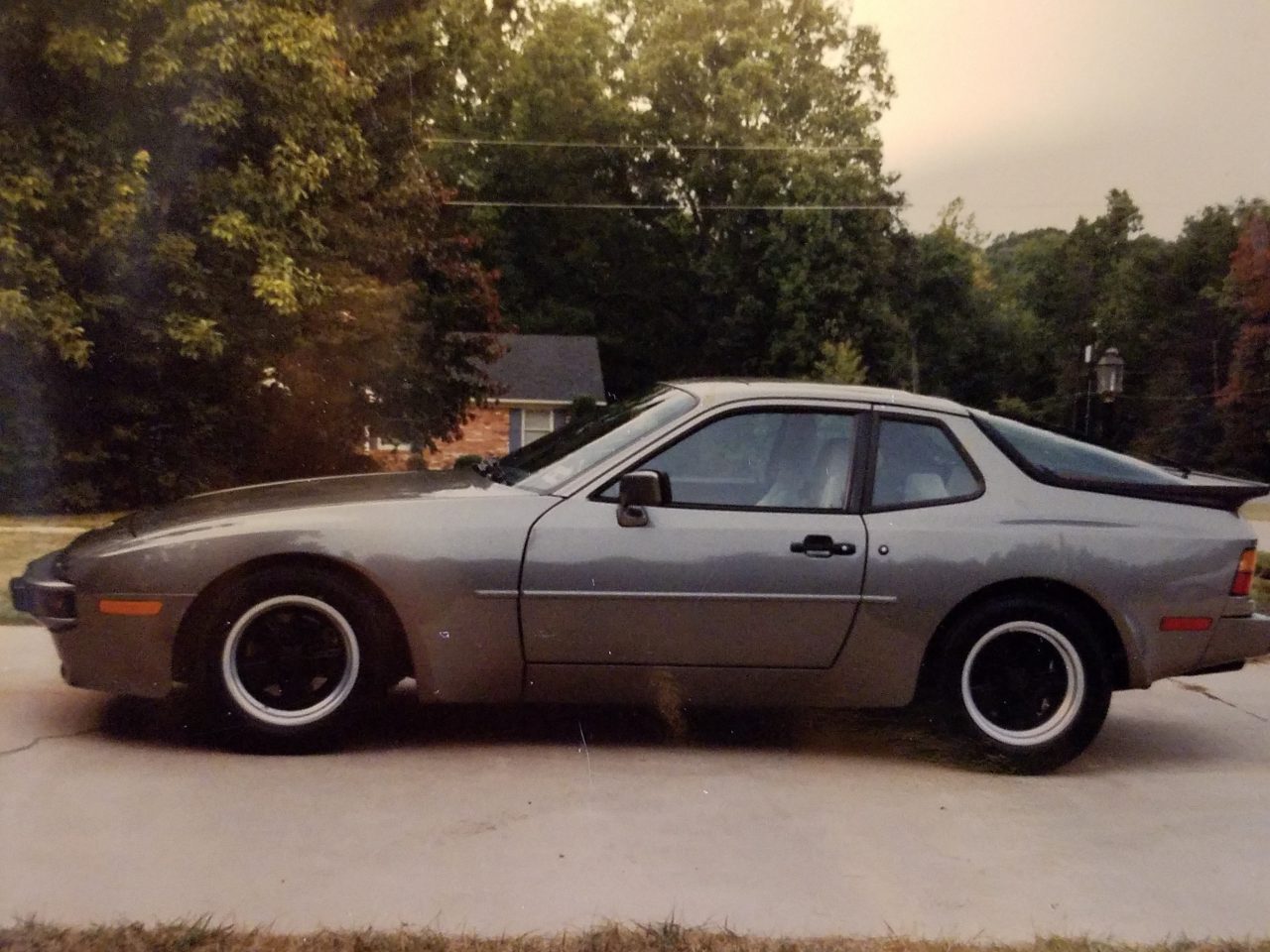
Dad’s 1985 Porsche 944.
Likewise, I couldn’t enter this race and expect to do well without putting in some practice, so in the weeks ahead of time, I logged hours of driving around the track to make sure I was up to the challenge.
When race day came, that practice paid off. I qualified in second place on a grid with some big names who I expected I’d have no chance against.
On the start, I quickly fell back to third after being out-braked into turn 1. I could tell I had the speed to gain back that lost position, but it wasn’t worth forcing the issue and ending my race. A few laps later, my patience was rewarded when the second-place driver spun into the wall, handing me the position.
Holding onto that spot wouldn’t be easy. Along with running through traffic — a mixture of slower Ford Mustangs, Mazda MX-5s, Spec Racer Fords, and Skip Barber Formula 2000 cars — I had pressure behind me from an outstanding opponent.
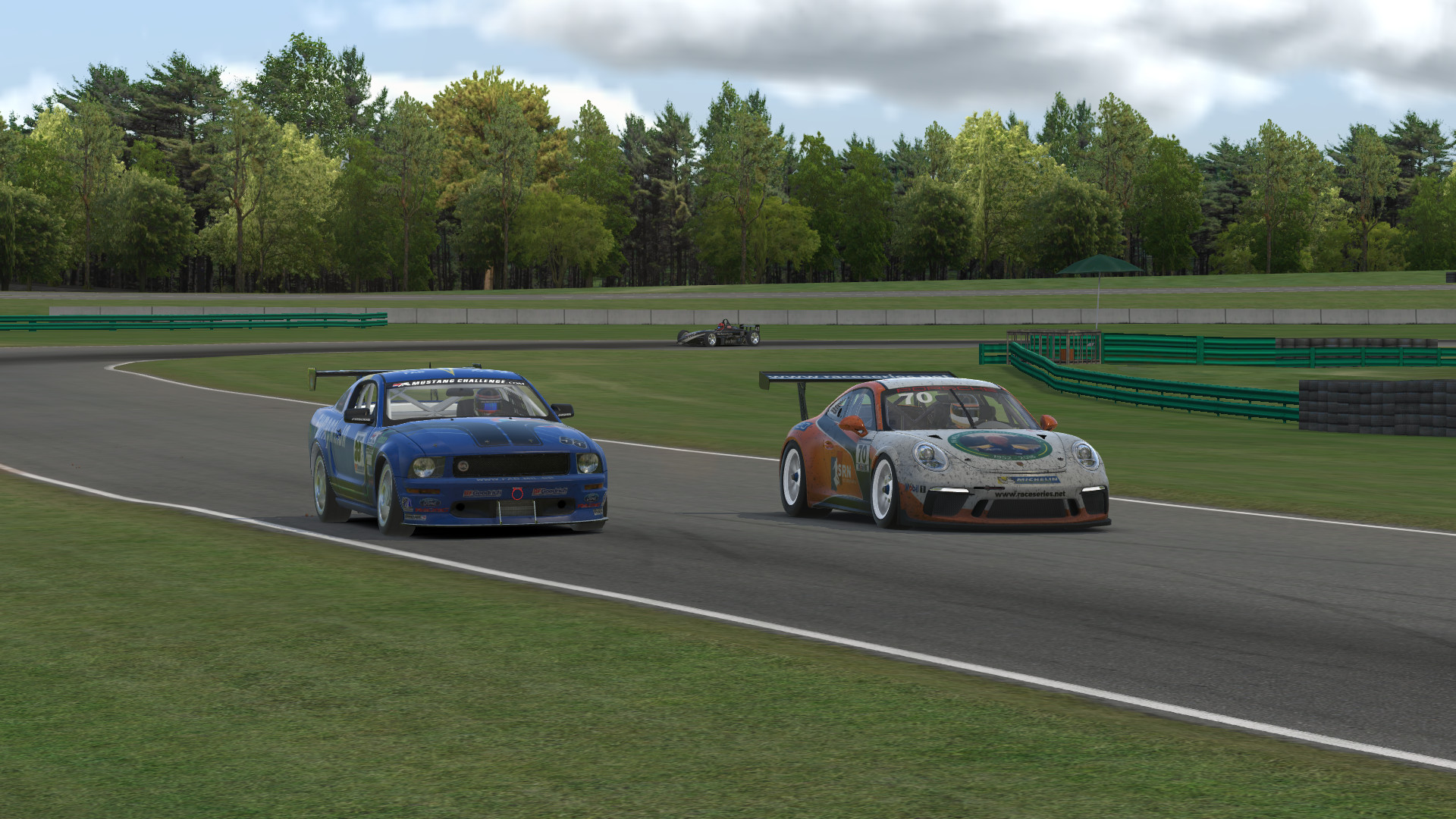
Negotiating mixed-class traffic in the Targa Virginia.
Lessons Learned from My Father
In the world of solo endurance racing, there was once no bigger name than Stefan Muijselaar. A former winner of the Targa Virginia and several early NEO events, Stefan has always had the speed and long-run consistency to succeed in these sorts of races.
For more than an hour of this three-and-a-half hour race, I had a mirror full of his menacing black Porsche. While I could tell he had slightly better pace than me, I was able to use traffic to my advantage, strategically putting cars and distance between us.
The first round of pit stops came and went, and I held onto the position. Neither of us changed tires during that stop, and as our second stint on the same set of virtual Michelins continued, it became even easier to make mistakes.
Once, I braked too late at the end of the backstretch and nearly let him get by. Again, I had my dad’s advice racing through my head. In our driving school, we faced that difficult corner — named the Bitch — and while he wasn’t given to profanity and wouldn’t say its name out loud, he reminded me not to overdrive it after I told stories of going in deep or getting back to the throttle early and running over the slippery exit rumble strip.
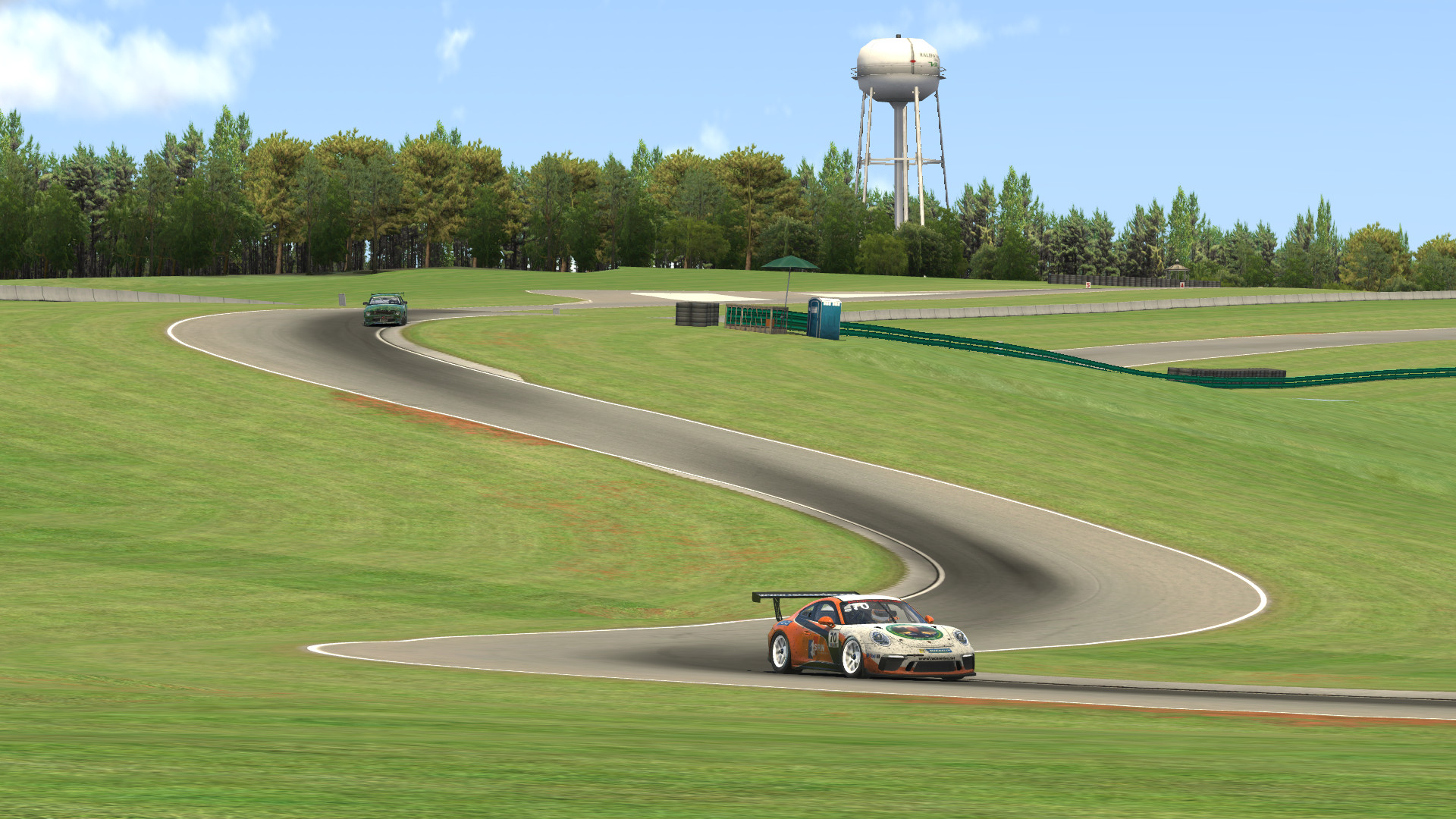
Descending through the Spiral on the Grand West course.
Throughout my battle with Stefan, I also had one of my dad’s life lessons in mind: act like you’ve been there before. It was his way of saying not to overreact to any situation, but to stay calm and mature and believe in yourself.
So as Stefan continued to crowd my mirror, I tried to do exactly that. Ultimately, I could only stay ahead of him for so long, and he got past me at the Bitch corner on lap 29. But I was proud of the fight I’d put up, and I knew I still needed to stay focused to avoid the mental lapse that nearly ended my previous Targa Virginia.
As the track warmed up — part of iRacing’s newly released dynamic time-of-day feature — my lap times slowed down, and even on fresh tires, the car didn’t have as much grip as earlier in the race. One lap entering the Oak Tree corner, I dropped two tires off the track and rolled through the grass, nearly into the tire barrier.
I recovered with nothing lost except a few seconds, and since the fourth-place car was nearly a minute behind, it was far from a costly mistake.
From that point, I kept the car on track in the final laps, earning a third-place finish that was perhaps my proudest race result of the year. While I wasn’t reeling off fast laps or passing cars all race to take that position, perhaps my method was appropriate. Like my dad, it wasn’t flashy, but it got the job done.
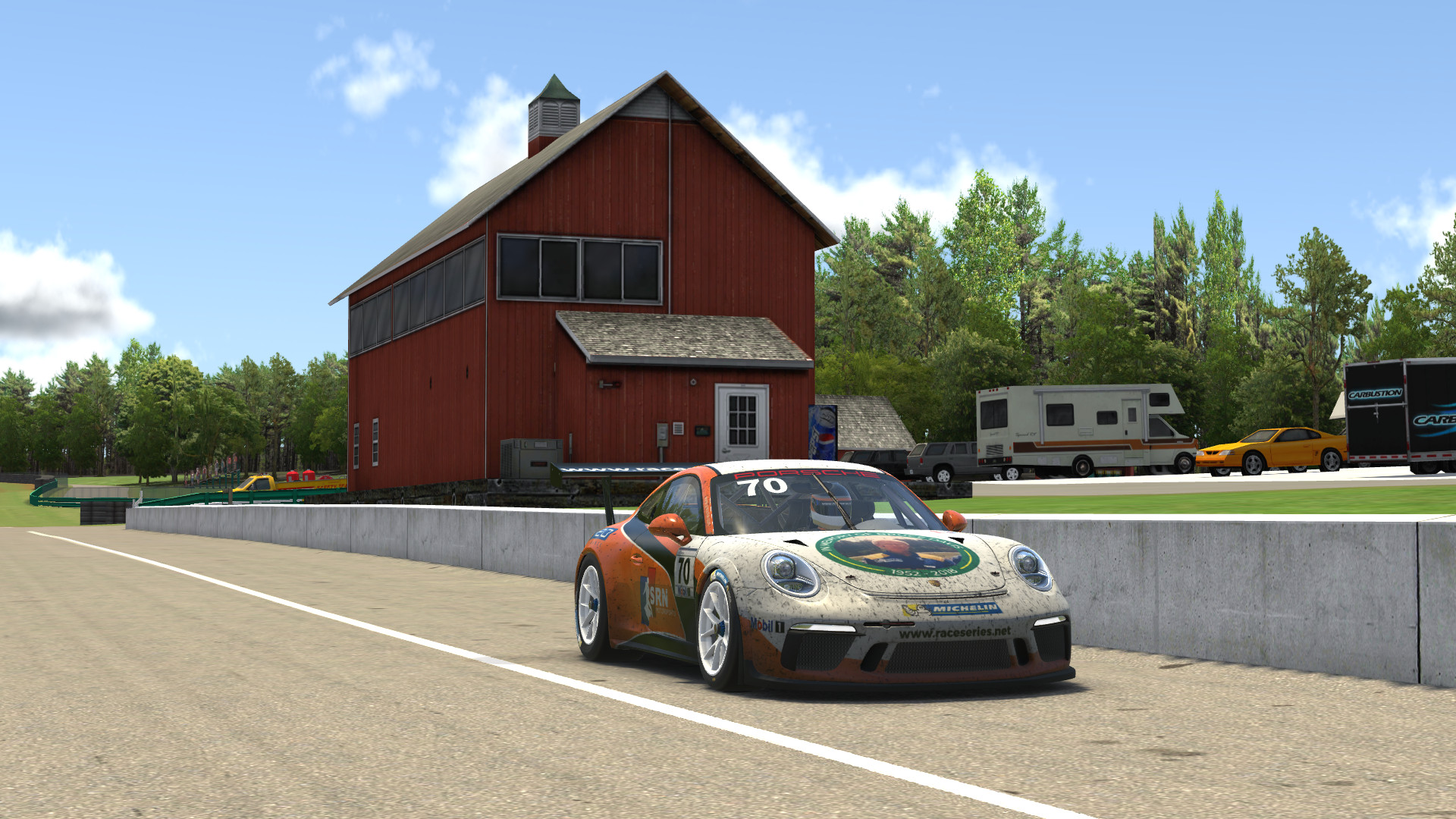
Parked in the backstretch pits where my dad and I geared up for our driving school.
Heat of the Moment
Even without a sweltering cockpit or the G-forces of a real car like my dad and I felt in our driving school, a race as long and demanding as the Targa Virginia can still take a physical toll. I tried to prepare as best as I could: with a bottle of water by my side, a couple of ibuprofen before the race in case my arms started aching, and bandages wrapped around my thumbs to prevent the calluses that tend to form when gripping the wheel for an extended period.
I knew I’d need to take those measures not just to ensure I survived the Targa Virginia, but also so I could drive in the NEO 6 Hours of Interlagos the following day.
I entered that race with admittedly less practice than I should have done, but the call of VIR was a tough one to ignore. And well-practiced or not, with two hours left in the six-hour race, it was my time to get behind the wheel.
Unlike the Targa Virginia, in this race, the track was cooling off as the race went on, so I expected to turn our team’s quickest laps of the race during my stint. However, I initially struggled to even come within a half-second of our best lap so far.
That frustration was compounded by the situation around me on track. My first few laps were plagued by heavy traffic, and while I’d started my stint in ninth place, I quickly faced pressure from two cars behind who were on the rebound from earlier penalties.
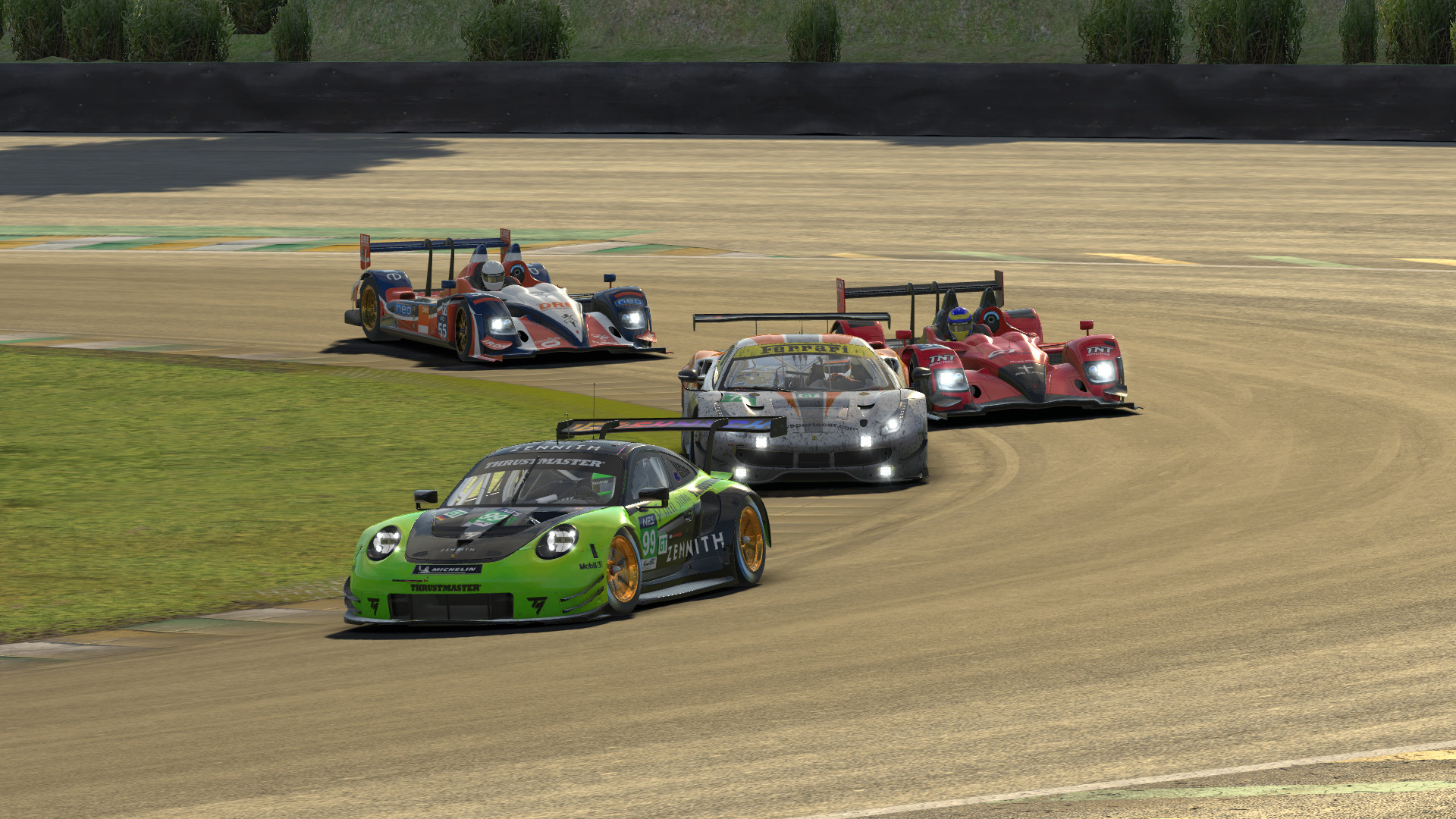
Stuck in heavy traffic early in my stint at Interlagos.
I knew they’d be faster than me, but it was disheartening just how quickly they closed in and got by. It was perhaps the most upset I’d ever been in an endurance race, both at myself and the drivers around me.
In moments where I’d usually keep my mouth shut or at least keep my complaints to myself, I cued the microphone to my teammates and unleashed a sullen stream of consciousness over the radio. Among my tamer comments, and one of the few that’s fit to print, I rhetorically asked, “do I have an arrow painted on the back of my car that says ‘divebomb here?!”
Even during the few positive moments of my stint, I couldn’t contain my emotion. After a mistake from the driver ahead and a side-by-side battle for position into turn 1 in which I came out ahead, I exclaimed ““that’s how you fight!”. Never mind that he passed me back on the very next straightaway.
Despite my frustration and lack of pace during the stint, we still had a shot at a top-ten finish by the end. However, I worried that chance might slip away if I stayed behind the wheel. So I made the call that no driver wants but we all hope we’re mature enough to accept: to put a faster driver — in this case, my long-time teammate Karl — in the car for the final hour.
More attrition during his stint helped us move up to eighth, which was easily our best result of the season so far. Perhaps we could have held that position even if I’d stayed in the car. I’ll never know, but I also have no regrets about my decision to get out. It was another of dad’s lessons — to stand by your decisions — put into practice.
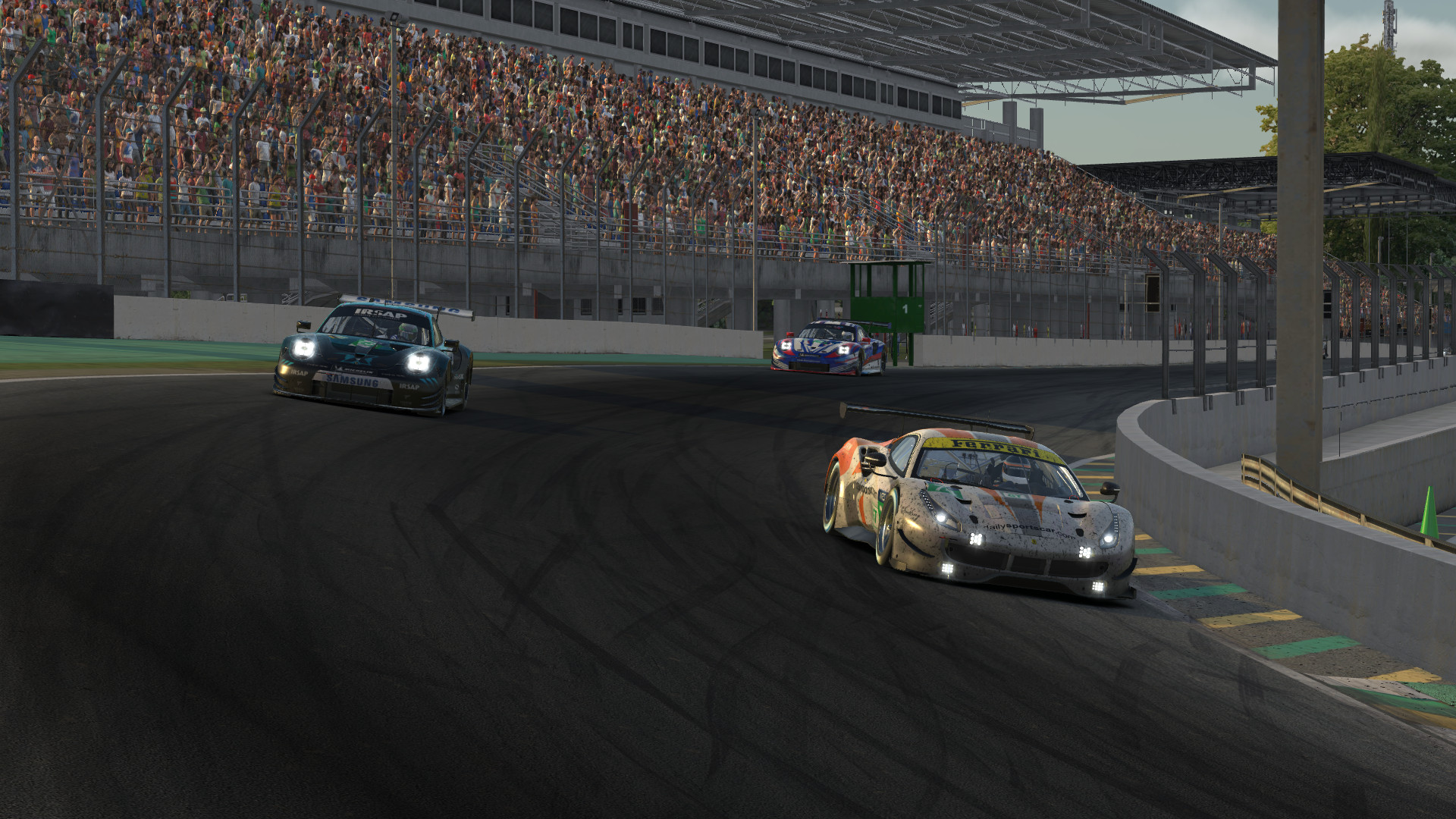
That’s how I fight: defending my position into turn 1.
A Memorable Weekend
While my two races to round out the year couldn’t have gone much differently, they reminded me of one other thing I learned from my dad. When I spoke at his funeral, I talked about what made him so strong. One reason was his ability to never let his emotions get too high or too low.
I like to think that I’ve gotten better about adopting such an even-keeled nature myself, but as my last weekend of racing shows, I’ve got some more work to do. However, it was still a reminder — perhaps an unexpected one — of the sort of man my dad was.
Not a day goes by that I don’t miss him. I miss him when I want to call and tell him about my latest race results. I miss him when I want to hear the stories about his old Porsches, and even if I’d heard them years ago and brushed them aside, I’d give anything to listen to them again. I miss him when I want to go to VIR together again as life’s ultimate teammates — a father and son.
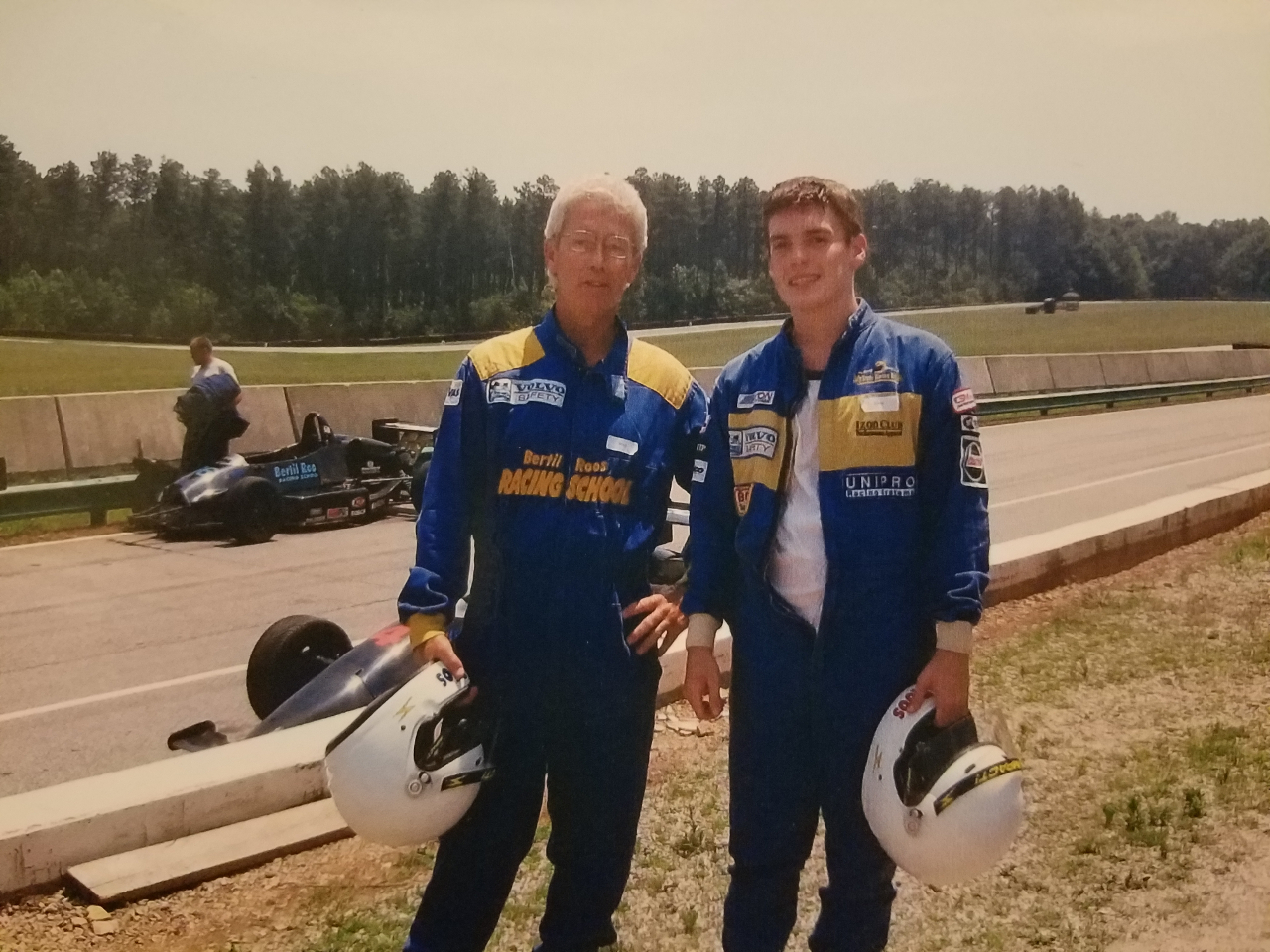
Dad and I on pit road at VIR.
Of course, I can’t bring him back, and in the state he was in just before he died, I wouldn’t want to. Thankfully, I made plenty of great memories with him over the years that will last the rest of my lifetime.
The thing about memories is that they are like muscles. If you don’t use them regularly, they tend to fade. That’s why in my racing and in the rest of my life, I feel happy — not sad — when those memories come rushing back. It’s a way of keeping his spirit alive in my mind.
As I close the book on the turbulent 2018 and begin a new year, I’m certain it will bring new successes, new failures, and new adventures.
No matter what comes, my dad will have a permanent place in my mind and my heart, reminding me to work hard, stay calm, and to take every roller coaster — both in life and on the track — with a grin and a smooth turn of the wheel.